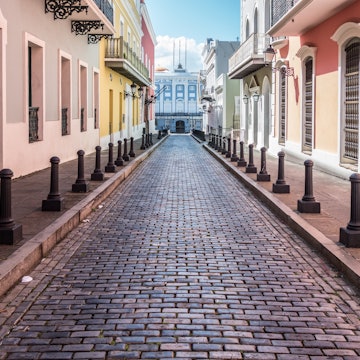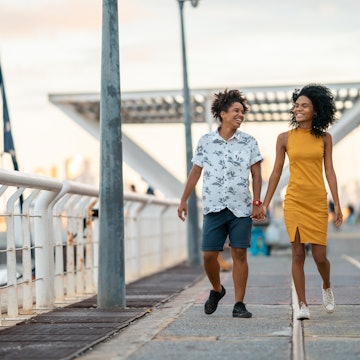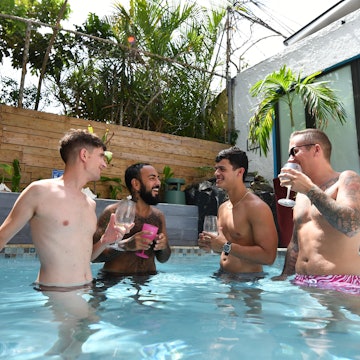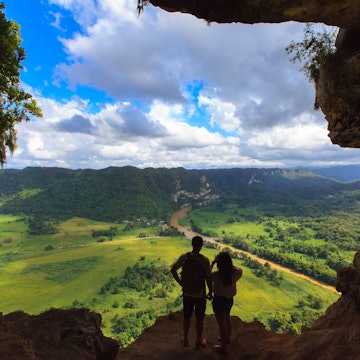

Wondering whether it’s too soon to visit Puerto Rico in light of recent events? According to the U.S. Geological Survey, over 300 earthquakes have struck the island’s southwestern coast since December 2019, from magnitude 3.0 shakes to a major 6.4 earthquake on January 7, 2020 – the largest to hit in a century.

Hearing this you might think the whole island is devastated. But the images circulating in the media showing Puerto Rico in rubble are almost exclusively from just five municipalities in the southwest: Guánica, as the epicenter of the quakes, Guayanilla, Peñuelas, Yauco, and small parts of Ponce. Over 2000 people have been forced out of their homes in these areas, the majority out of precaution as aftershocks continue, albeit at lower magnitudes.
And yet, on the north side of the island, cruise ships are still docking and visitors continue to flock to the major tourist sights.
“During Hurricane Maria, there was scarcity of food and resources, but now that’s not happening,” says Carmen Portela, co-owner of Local Guest, a social enterprise matching visitors with community tours around Puerto Rico. “The north area is moving fine, the ports are open, people are working.”
If you’re interested in visiting Puerto Rico post-earthquakes, here is everything you need to know, from updates on major tourist sights and travel infrastructure, to the best way you can help aid the recovery of la isla.

Where did the earthquakes hit?
It started on December 27 and 28, 2019 – the first tremors Puerto Ricans had experienced in a long while – in Guánica, the epicenter of the quake.
“From there, smaller shakes took place that not a lot of people felt, until the morning of January 6,” says Portela. “That was a 5.8 magnitude earthquake, on Three Kings Day, one of our biggest festivities here and a national holiday.”
A day later, the 6.4 magnitude quake hit the southwest region, triggering an island-wide blackout. Power was quickly restored to over 90 percent of the island. Aftershocks were expected, and they occurred daily over the following weeks in the same area. Three major ones have struck so far: a magnitude 5.8 on January 10, 5.9 on January 11, and 5.2 on January 15.
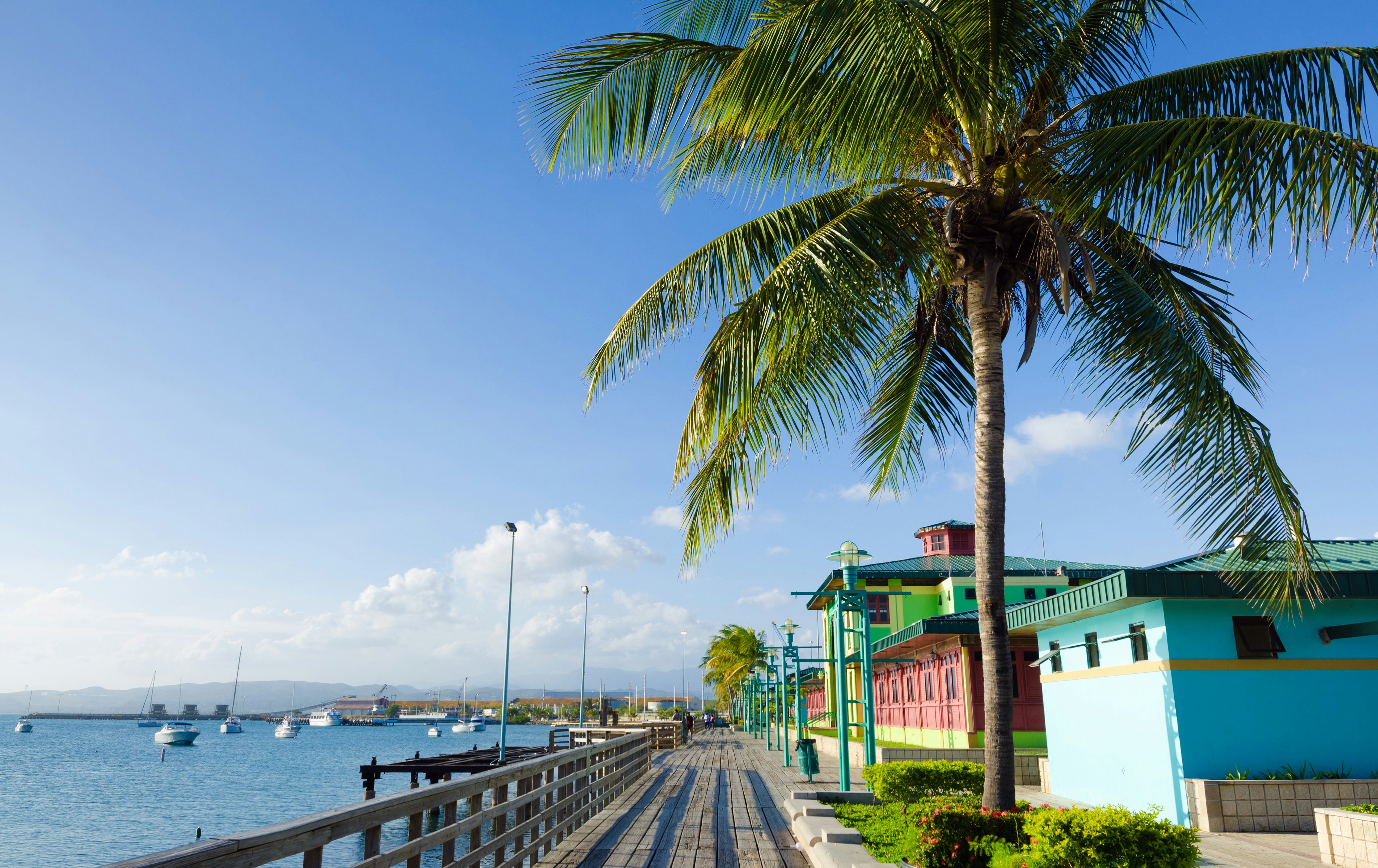
Which tourist sights were damaged in the earthquake?
Guayanilla’s iconic Punta Ventana collapsed on January 6 – a natural rock formation and major tourist draw on excursions in the south of the island. Guayanilla also lost its main Catholic church, Parroquia Inmaculada Concepción, and the ruins of the 1893 Guánica Lighthouse collapsed.
According to Melina Aguilar, owner of Isla Caribe tours in Ponce, a handful of buildings in Ponce’s historical city center suffered structural damage during the January 11 aftershock. These include the Museo de la Masacre de Ponce, which was already closed due to lack of funding, Edificio Moscoso, and Casa Vives, a 19th century house that had survived the 1867 and 1918 earthquakes. Ponce’s boardwalk and social hub, La Guancha, also suffered cracks and as of publishing remains closed to the public.
“Many of these buildings were already weak for three reasons,” says Aguilar. “Hurricane Maria, the lack of funding over the years, and bad local governance.” Other Ponce sights, such as the Parque de Bombas, remain firm and standing.

What’s open for business?
Aside from the southwestern municipalities in the thick of the emergency, the rest of Puerto Rico is operating as normal. Popular tourist sights such as Old San Juan, Casa Bacardí, El Morro and San Cristobal forts, remain open and unaffected.
El Yunque National Forest, which accounts for 20 percent of Puerto Rico’s tourism economy, was spared.
“We did an initial assessment of all the bridges and historical infrastructure, and everything was fine,” says El Yunque Forest Supervisor, Keenan Adams. “Subsequent aftershocks, we don’t even feel them. We are almost as far away as you can get from the epicenter.”
Ponce’s historic downtown reopened on January 16, after temporary closure. Businesses there are up and running, such as Utopia, Hotel Melia Ponce, and Plaza Hotel & Casino.
Rincon, a popular surf hub out west, is also fine. “We were just at the Art Walk,” says Paulina Antonetti, co-founder of Spoon food tours. “There were crafts, live music, people selling honey and art – it was wonderful and it was full of people.”
Hotels across Puerto Rico are unaffected, except for a handful of venues in the south – if you are planning to visit the southern regions, check with any booked hotel or guesthouse before travel to ensure they are running as normal.

Is it still possible to travel around the island?
Land and sea transportation continues to run smoothly. Flights have been operating to and from San Juan, Ponce, and Aguadilla airports. Traveling to Vieques and Culebra is also a non-issue, as the ferries are operating as usual.
Local taxis and rideshares are circulating. If you’re planning to rent a car, check the local transportation department’s updates on any road closures.
“The difference between the hurricane and the earthquakes is that after the hurricane there was no electricity, there was no water,” says Stephan Watts, co-owner of popular boutique hotel The Dreamcatcher in San Juan. “That is not the case now. The infrastructure is completely fine. You can literally get to anywhere, even in the south.”

How can travellers best support recovering communities?
It’s tempting to volunteer and bring goods to a disaster area, but local experts advise against it. With Puerto Rico’s ports open and commerce intact, residents can purchase solar lamps, camping gears, and bedsheets on the island, which supports local businesses.
“In order to make the biggest impact,” Portela says, “it’s best to donate to organisations that are already set up on the ground and aware of their communities’ needs.”
Love in Motion, which Portela set up after Hurricane Maria, distributes donations directly to established community leaders in the south. ConPRmetidos is another solid non-profit 501(c)(3) organisation founded in 2012 and active on the ground, as is Giving Life, a missionary foundation based in Puerto Rico.
Aside from donations, visit Puerto Rico responsibly: stay local, sign up to sustainable tours, and spend your tourist dollars directly in local businesses employing local people.

Is it too soon to visit Puerto Rico post-earthquakes?
Stay informed through USGS and the Puerto Rico Seismic Network. As of January 17, however, the USGS foresees aftershocks decreasing in frequency and magnitude over the next 30 days.
“Not only are we ready, we need you to come back,” says Brad Dean, CEO of Discover Puerto Rico. “Tourism is vitally important to our economy, and tourism has led the recovery post-Maria.”
You might also like:
What travelers need to know about the Puerto Rico earthquakes
Puerto Rico's vibrant art scene gets boost from international muralists






